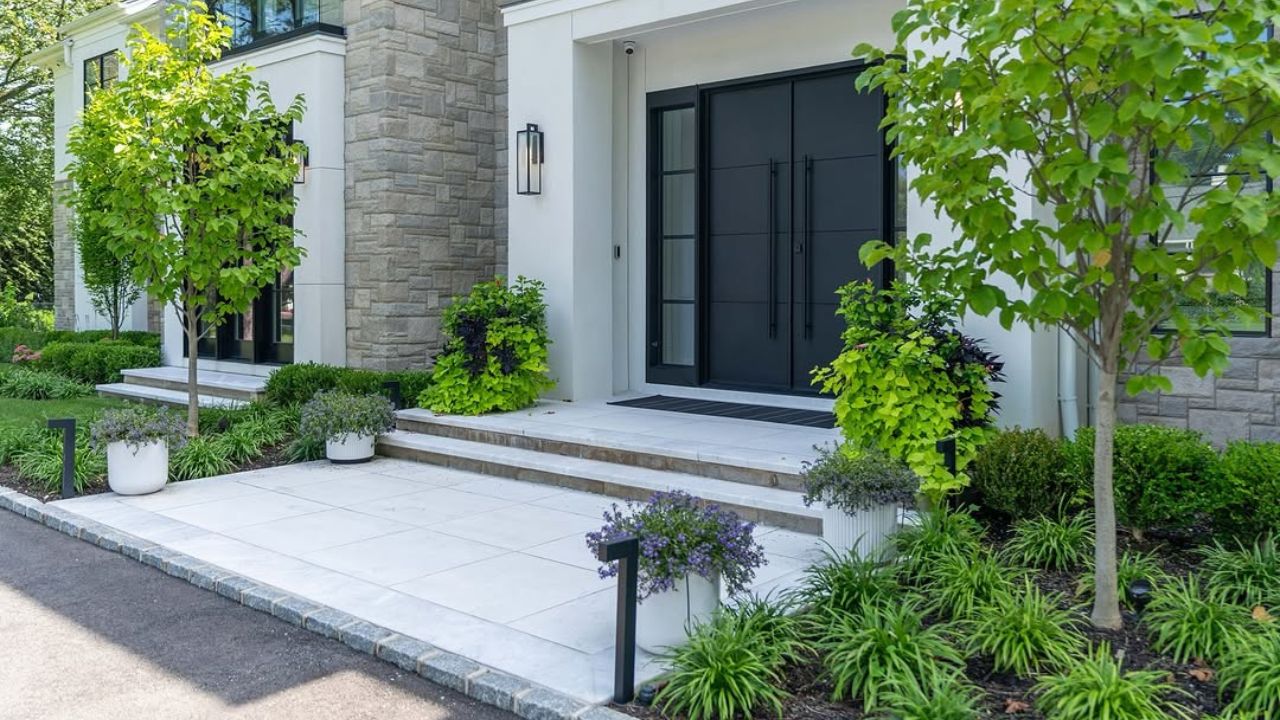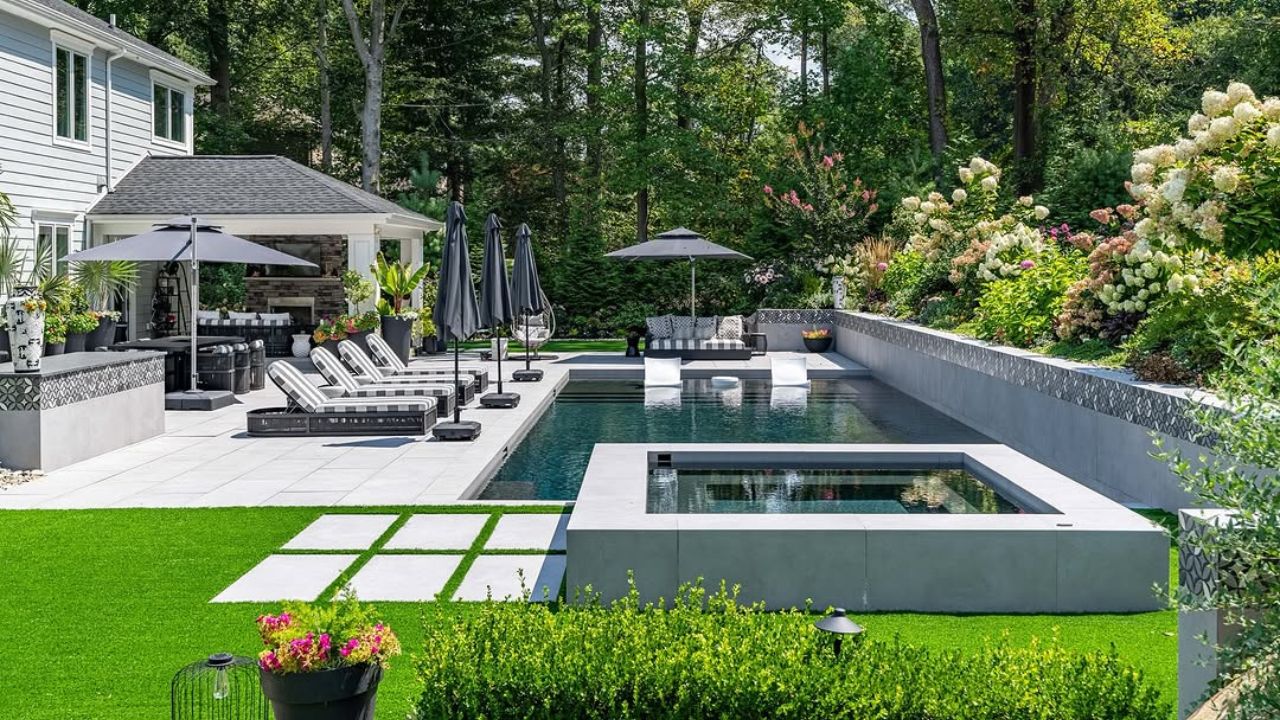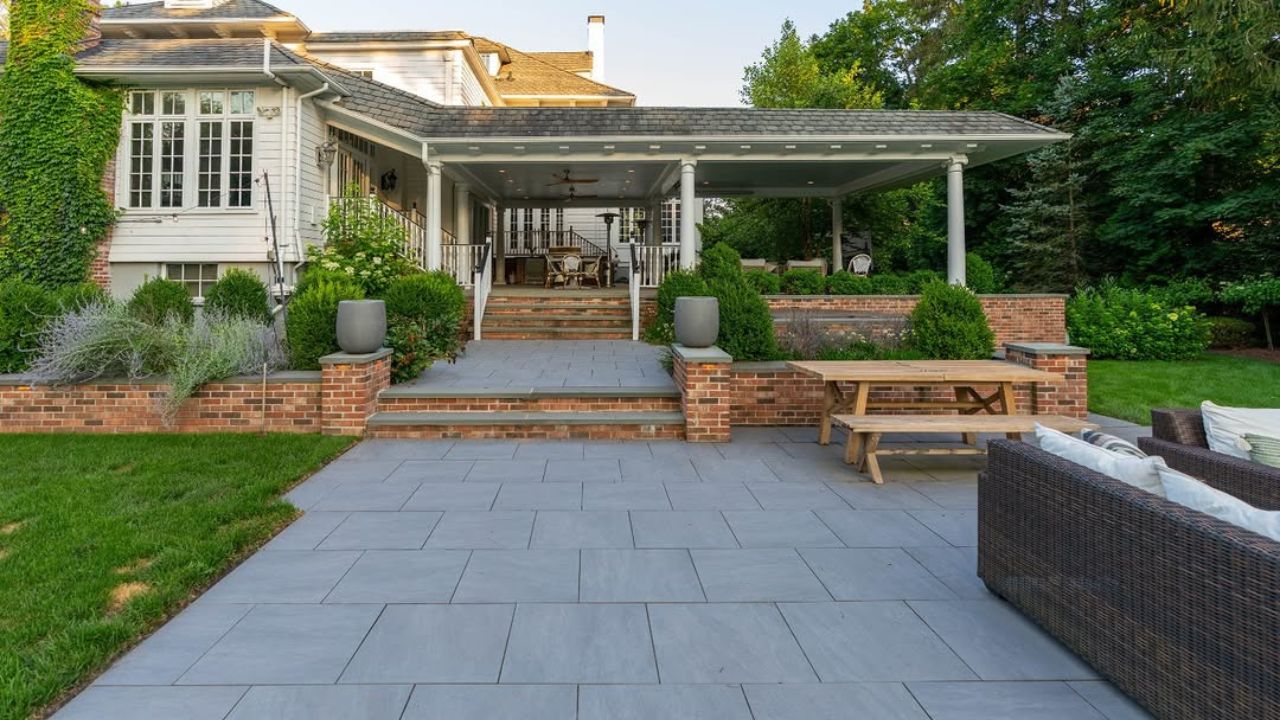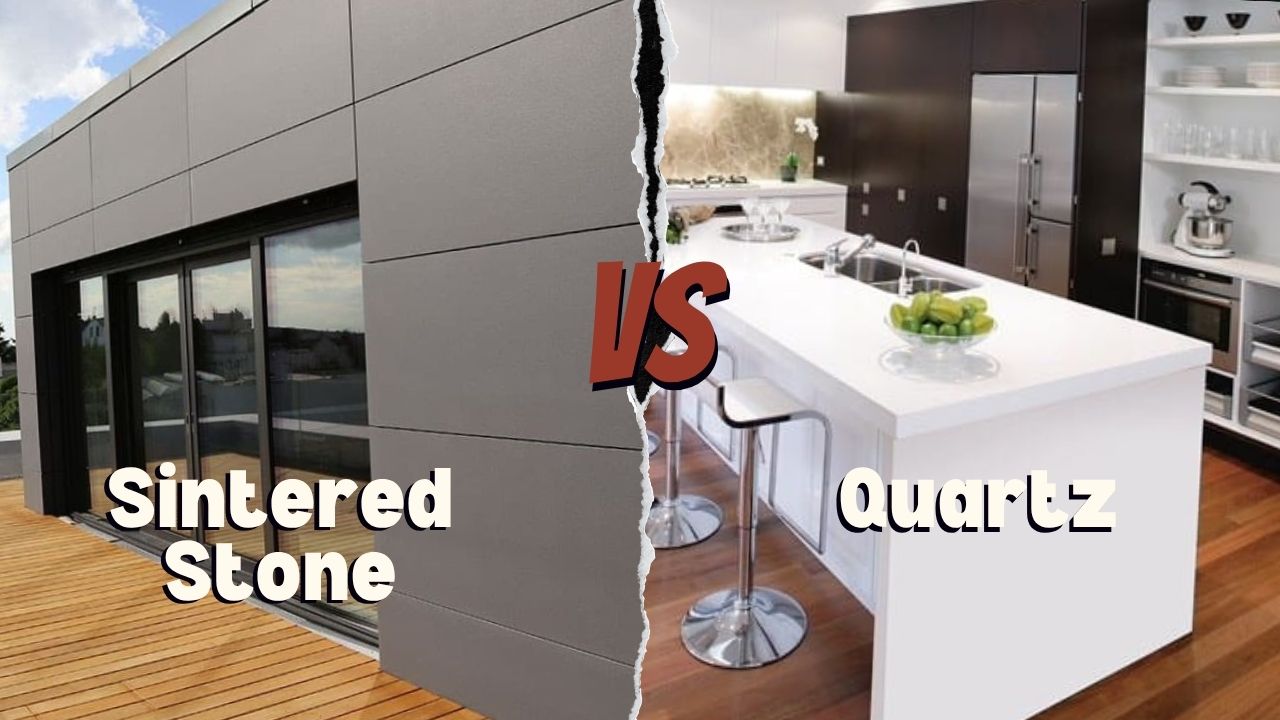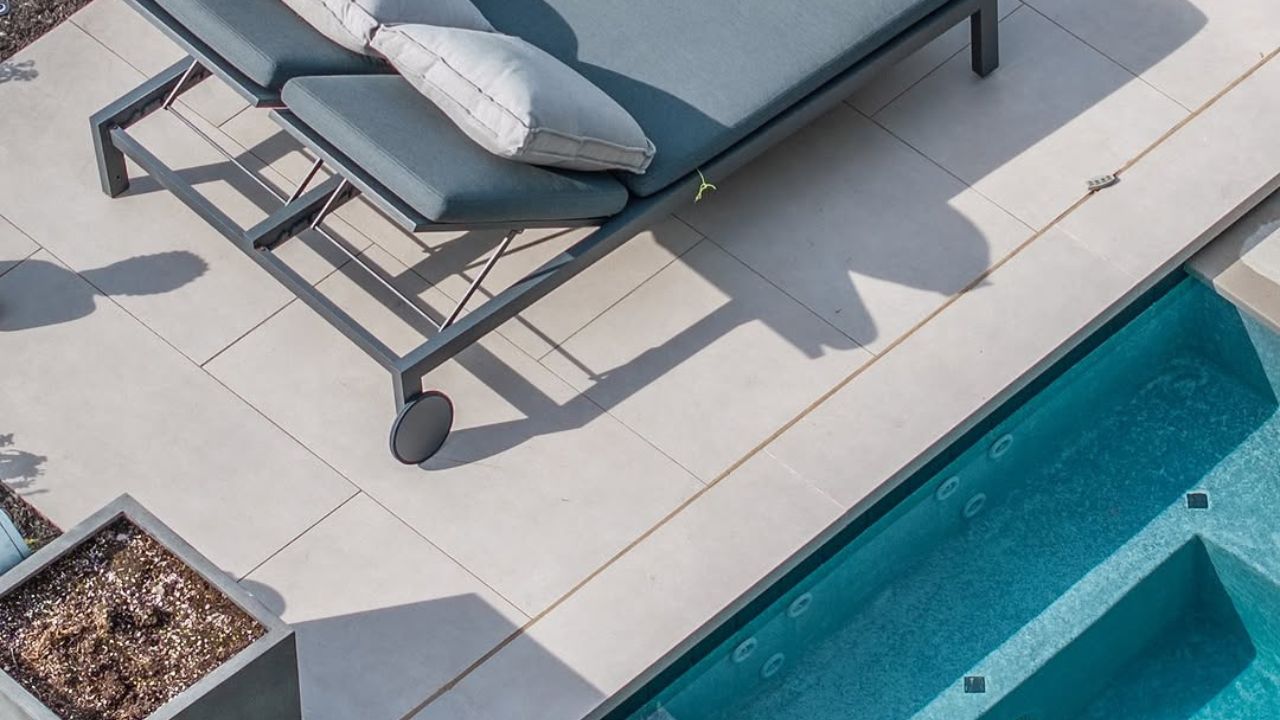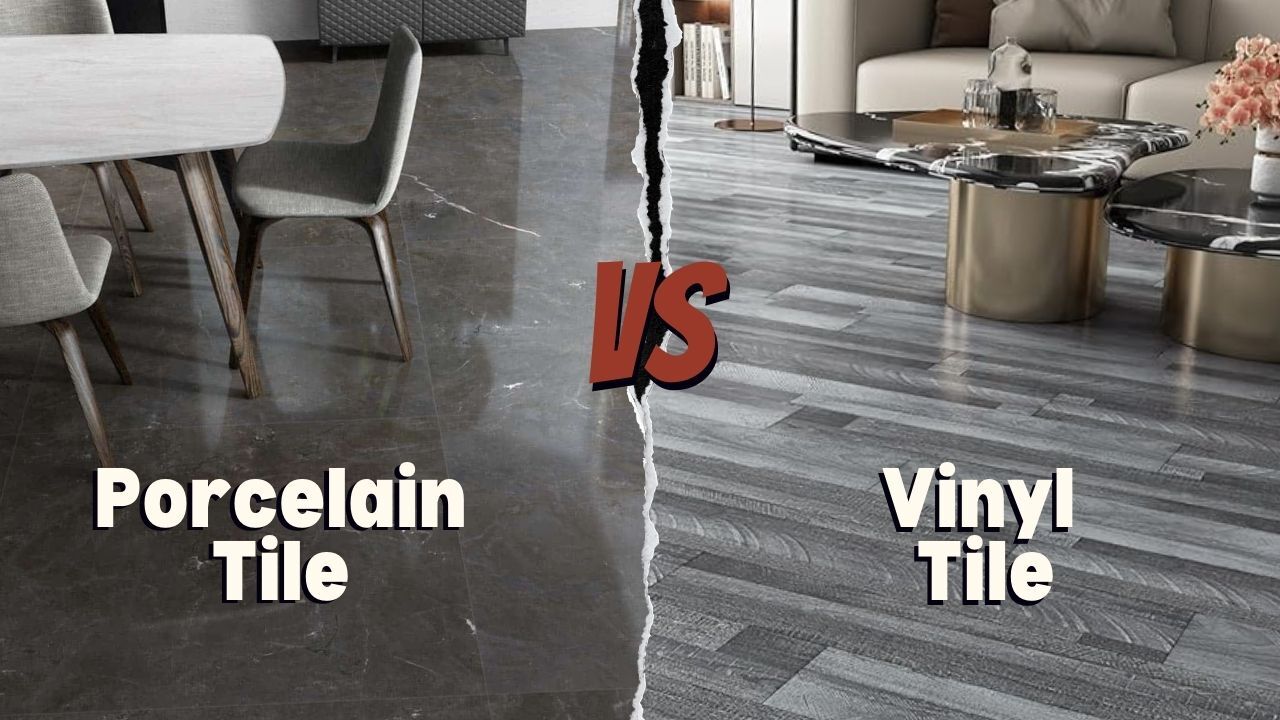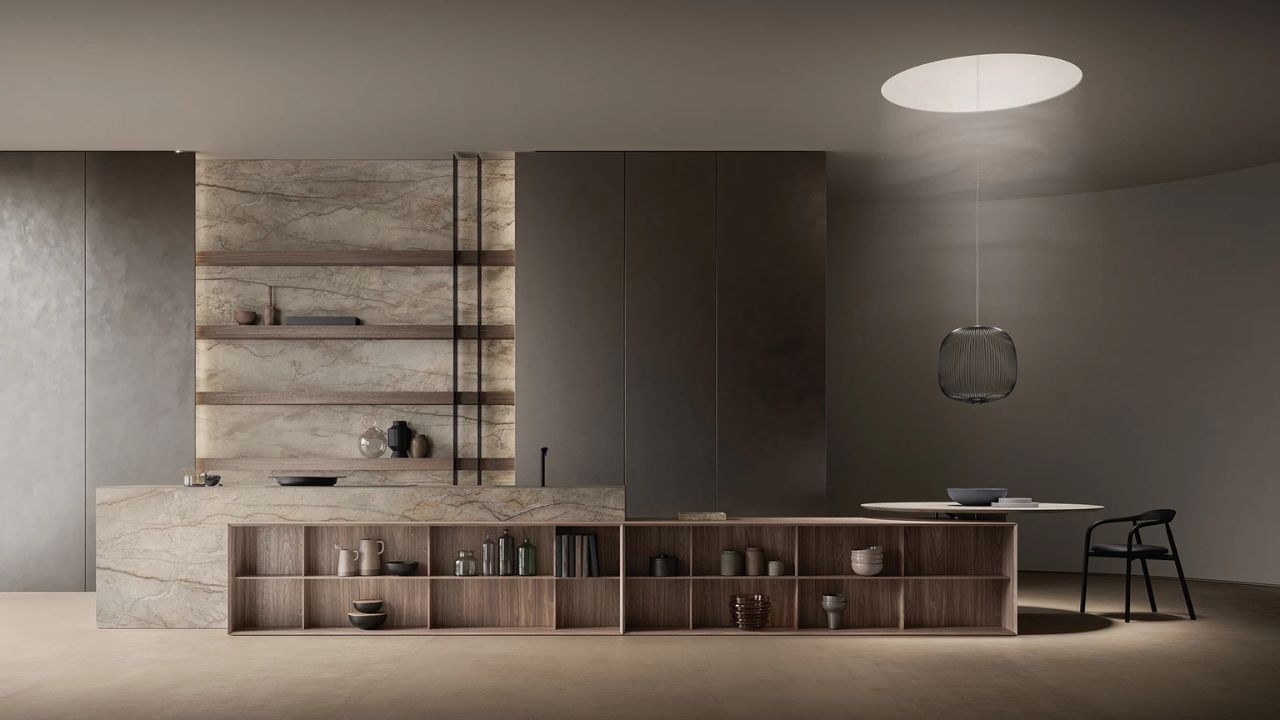Porcelain tile and pavers are a popular material that is hailed by homeowners, businesses, architects, and project managers for their durability, low maintenance, and almost infinite range of styles and colors. Porcelain pavers offer a durable outdoor surface for decks and patios that may look like natural stone, but they are far more resilient than stone and concrete pavers. You can explore the different types of porcelain pavers to choose the best fit for your project.
Understanding how porcelain pavers are made helps you make informed decisions as a homeowner, architect, or contractor. Here is what you need to know.
What Materials Are Used to Make Porcelain Pavers?
Each porcelain paver is manufactured with its raw material. The main ingredients are:
- Kaolin clay: It is a fine, white clay that holds shape under pressure.
- Feldspar: It is a mineral that aids vitrification during firing
- Quartz and silica: These components are responsible for adding and improving strength and density
- Pigments: They are used for tone and pattern, mixed into the body or printed on the surface. They give porcelain its desired look, from wood look to natural stone look porcelain pavers.
These materials are mined, cleaned, and filtered to remove organic matter before they move into the next phase.
The Porcelain Paver Manufacturing Process
Porcelain is known for its durability and low maintenance with no water absorption for outdoor spaces, but these major features stem from the start of its manufacturing process.
Mixing
- These refined materials, kaolin clay, feldspar, silica, and mineral additives, are crushed into fine powder using ball mills.
- It is a large rotating drum that grinds them into a uniform, ultra-fine powder.
- The water is added to create a smooth slurry with a consistent texture.
- This wet mixture ensures the even distribution of color and minerals throughout every batch.
- This creates a base for structural and visual consistency in the final product.
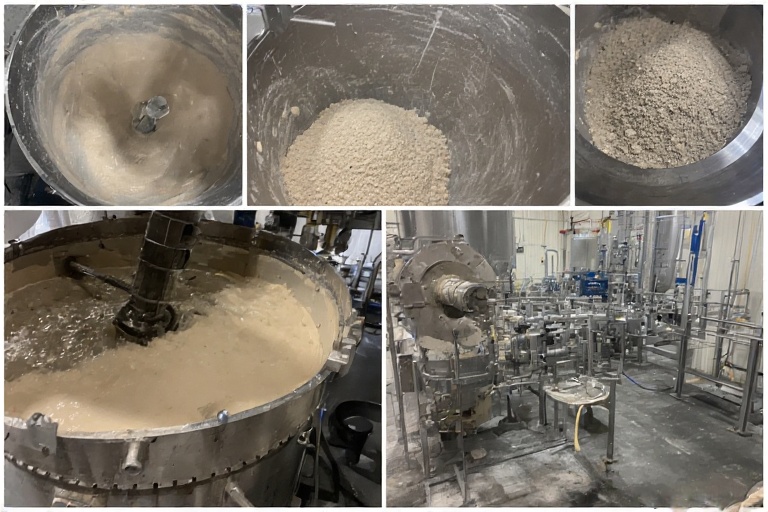
Spray Drying
Next, the slurry is dried with a spray dryer.
- It is exposed to the bursts of hot air.
- This evaporates the moisture within the slurry and turns it into small spherical granules.
- It is assured that these granules hold just enough moisture so they can hold their shape under pressure.
- Granule size and texture are controlled closely, as they directly impact the compaction strength and final density of the paver.
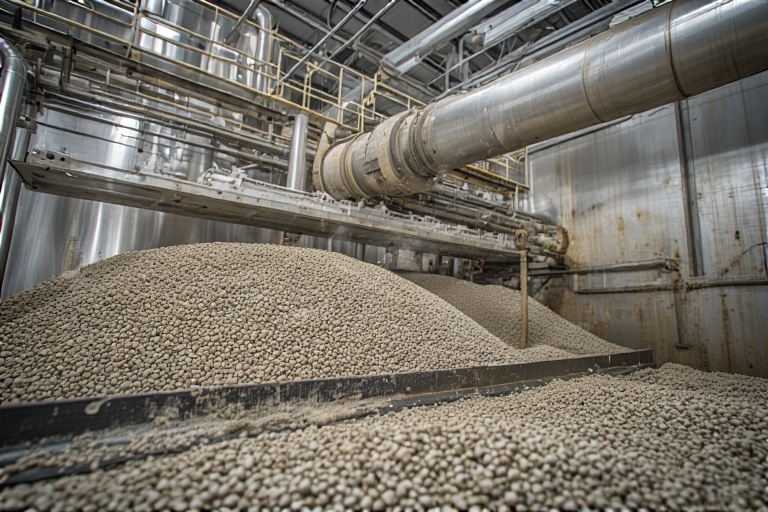
Pressing
- Next, the dried granules are poured into steel molds and pressed under immense hydraulic pressure. It is usually between 400 and 500 kg/cm².
- Pressing under hydraulic pressure removes any air pockets and packs the particles tightly.
- This creates a dense, uniform body.
- This stage defines the shape, thickness (usually 20mm for outdoor pavers), and overall strength of the paver.
What is unique about porcelain pavers is that each paver features a consistent performance with this precisely controlled process. Natural stone, on the other hand, has variable density.
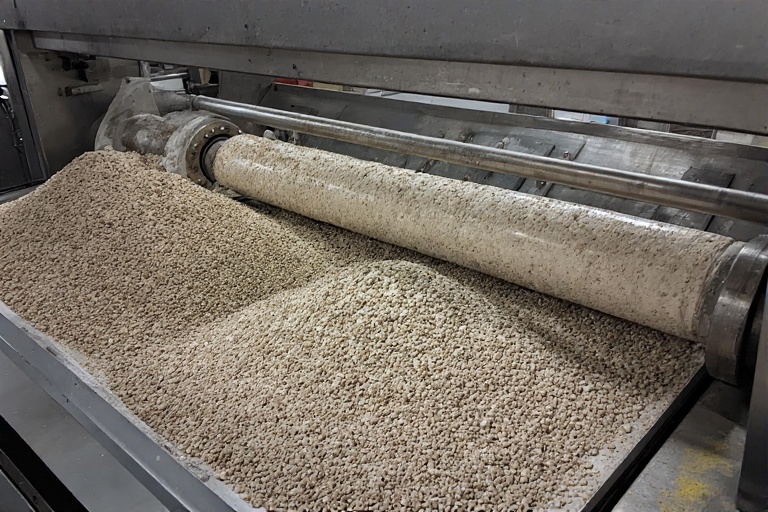
Drying
In this step, the shaped slabs go through a pre-firing drying in a dedicated chamber.
- The moisture is removed slowly and uniformly to remove internal stress.
- This step is crucial, or the porcelain paver may warp, or you may face cracks in the kiln.
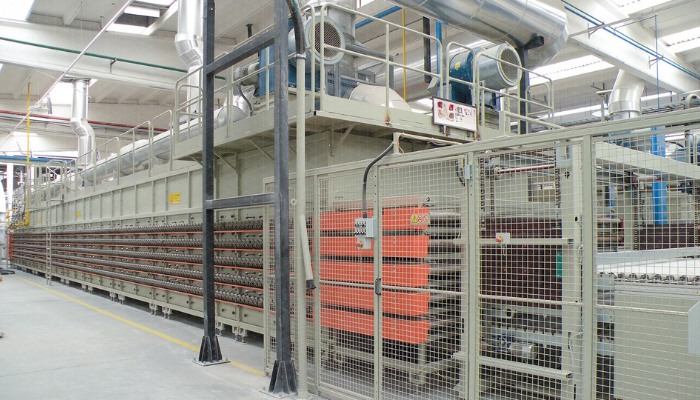
When the drying phase is done right, the tile will be dimensionally stable and ready for high-temperature vitrification.
Firing
- Once the tiles are dried, they pass through a long roller kiln. The kilometer length may reach over 100 meters in length.
- The tiles are heated to temperatures exceeding 1200°C.
- This critical sintering step fuses the mineral particles into a single verified mass.
This process also makes the porcelain pavers
- Frost-resistant
- Stain-resistant
- Scratch-resistant
The tile turns into a high-quality porcelain that is a dense, glass-like structure with near-zero water absorption (<0.5%) under such extreme heat.
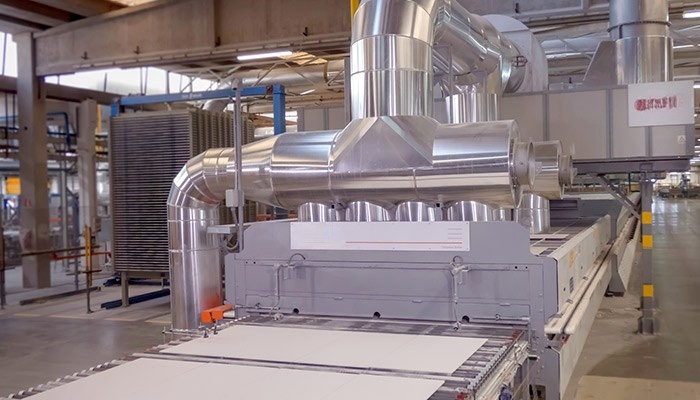
A cheaper porcelain alternative may skip the process as a whole, which compromises the structural integrity. It can be observed especially in colder environments.
Finishing Touches
If a design is to be added, digital printing or texturing may be done before firing using a state-of-the-art inkjet printer. Once inside the kiln, those patterns are baked into the surface, becoming permanent. Unlike printed concrete or surface-painted stone, the patterns on porcelain won’t peel, fade, or scratch off easily. Outdoor pavers get:
- Surface textures (grip finishes for wet areas)
- UV-resistant inks for long-lasting colors
- Edging or rectification processes for clean lines
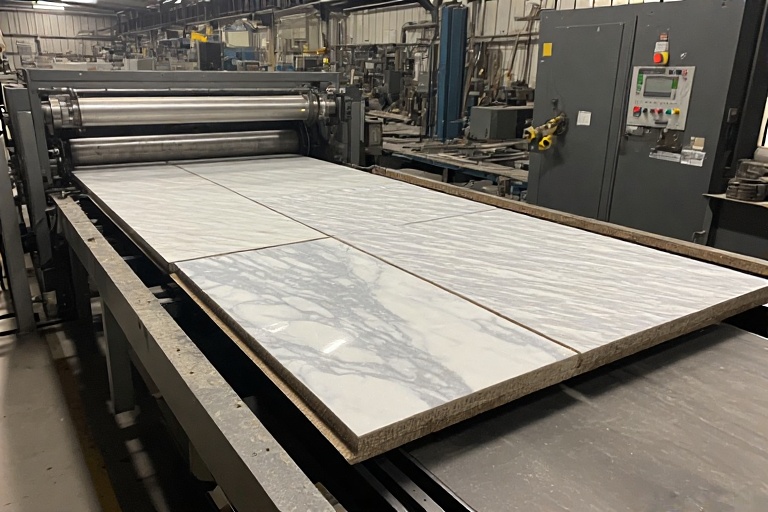
Porcelain Rectification
The rectification process ensures clean edges for porcelain outdoor tiles and pavers. In this process, the oversized porcelain tiles move through precision milling machines that trim each edge after firing. This process creates uniform dimensions that result in consistently sized tiles by the end of the conveyor line. These outdoor porcelain pavers are ready for installation with tight, clean joints. Learn how to install porcelain pavers for a durable and professional finish.
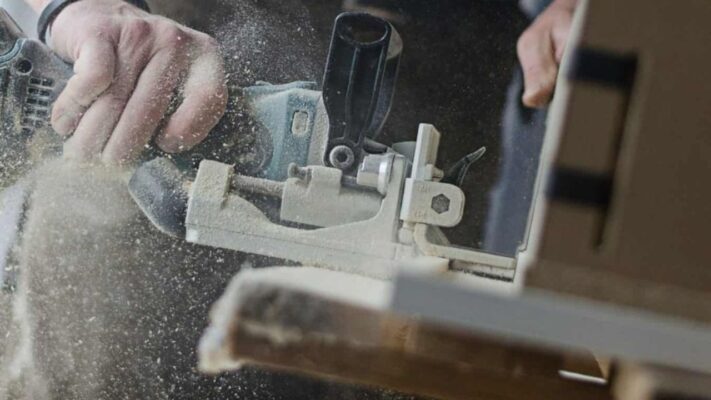
Once the process is completed, we have the porcelain pavers that may resemble the wood, marble, concrete, or travertine look. These pavers perform superior in outdoor conditions from harsh weather, extreme heat, cold, rain, to heavy foot and vehicle traffic. They won’t crack, stain, or show signs of wear and chipping for a long time. Read our guide on the best way to cut porcelain tile.
Are Porcelain Pavers Better Than Natural Stone?
Often, it is debated that if choosing porcelain pavers is a better solution for outdoor space than natural stone pavers. In several ways, outdoor porcelain performs superior to the stone pavers. Take a look at the table down where we have explained how porcelain pavers are better than stone paving solutions.
| Feature | Porcelain Pavers | Natural Stone |
| Water Absorption | < 0.5% (virtually waterproof) | Varies (can be porous) |
| Maintenance | Low (no sealing needed) | High (requires sealing) |
| Color Consistency | Uniform | Natural variation |
| Slip Resistance | Textured, certified ratings | Depends on the finish |
| Cost | Mid-range | Varies (can be costly) |
| Environmental Impact | Recyclable, long life | High quarry impact |
As you can assess that porcelain paving is outperforming stone pavers in almost every aspect. While natural stone offers elegance, a distinct look, and an organic statement, outdoor porcelain tiles add reliable and durable performance with low maintenance in any outdoor project as well. It can even be enhanced if you get your porcelain pavers from brands like NT Pavers. They source porcelain pavers that meet international standards for strength, sustainability, and surface safety. So you will have peace of mind about your investment in the long run. Read our guide on porcelain pavers vs natural stone.
FAQs About Porcelain Pavers?
Let’s answer your most asked questions about porcelain pavers.
How long do porcelain pavers last?
30 years when properly installed. This is because of their dense structure and resistance to water, frost, and fading.
Are all porcelain pavers suitable for outdoor use?
No. Only those with a thickness of 20mm, a slip-resistant finish, and low porosity are made for outdoor use, like pool decks and patios.
Do porcelain pavers require sealing?
No. While sealing can add a decade to its longevity, sealing generally is not necessary.
Can porcelain pavers be installed over sand or gravel?
Yes. Many systems support dry installation over compacted sand, gravel, or pedestal systems.
How do porcelain pavers perform in cold climates?
Exceptionally durable. Their low water absorption rate makes them resistant to cracking, even in freeze-thaw conditions.
Bottom Line
Porcelain pavers are undoubtedly one of the best options for outdoor projects. It is manufactured with fine clay, quartz, and minerals. Once the process of mixing, pressing, drying, firing, and finishing is complete, we obtain pavers that are highly durable and require minimal maintenance.
Modern printing technologies have made it possible to get these pavers in any look (stone, wood, to concrete look) and surface, like polished, honed, and textured ones. Compared to natural stone, porcelain pavers last longer in outdoor projects if selected with accurate descriptions.
Just make sure to talk about your porcelain pavers supplier before getting porcelain pavers. The upfront cost may seem higher, but it can be a great investment for the future of your outdoors.

